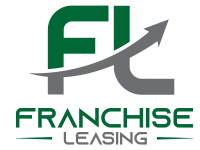Craig Holman is betting the farm on his new business — literally. After getting laid off from a high-level job in the steel industry, the 58-year-old engineer put up his share of the family farm as collateral for a loan to open an emergency home cleanup service in Columbus, Ohio. The hardwood tree farm has been in Holman’s life for years.
It’s also the key to Holman successfully opening his AdvantaClean franchise. Small-business loan brokers say collateral is now king among risk-averse lenders. Loans to small companies have decreased by some $60 billion since the 2008 financial market crisis, according to the Small Business Administration. Much of that decline reflects the near extinction of unsecured loans, which were fairly common among small-business borrowers before the recession.
Holman’s $85,000 loan — along with part of a severance package from his former job — enabled him to pay a one-time franchise fee to AdvantaClean, buy a truck and purchase equipment for water-damage recovery, mold removal, duct cleaning and dryer vent cleaning. He also hired one full-time and three part-time workers and an office assistant. He now gets three to four calls a day from homeowners with flooded or moldy basements. About a third of the calls translate into paid work. While prices vary, a typical mold-removal job can bring in $3,000, he says.
Banks now divide small-business borrowers like Holman into two groups: those with collateral and those without it. Collateral is any tangible asset — typically a home, factory or property, or even equipment, machinery and inventory — that can be put up as security for repaying a debt. In the event of a default, lenders can seize these assets to recoup the funds through sales or auctions. According to BoeFly.com, an online marketplace that matches lenders and borrowers, most of the lending institutions on its site now favor asset-heavy borrowers, such as restaurants, retailers, hotels and manufacturers.
An analysis of 250 small-business loan applications conducted by a Philadelphia-based lending brokerage, found nearly half were deemed ineligible due to a lack of collateral, despite good credit scores and cash flow. Instead, these businesses were limited to more costly alternatives, such as factoring, cash advances or peer-to-peer loans. “I can find a loan for 90% of the small businesses that want to borrow. The question is can they afford it”. “Without collateral, it’s really the wild, wild west out there”.
One of the most common forms of collateral entrepreneurs use is their home. But this strategy is becoming more difficult. Since the housing market crash, small-business owners have struggled to tap real estate for business financing amid plummeting home prices. Lenders typically apply a 20% to 25% discount on the net value of the property — that is, the total value of the property minus any outstanding mortgage. The discount can be as high as 50% of undeveloped land, equipment or machinery. What’s more, home equity lines of credit have declined by $31.5 billion since the housing bubble burst, eliminating some $7.9 billion in credit available to business owners, according to estimates by the Federal Reserve of Cleveland. Ironically, the slumping housing market has been a major boon for Holman’s business and a key source of revenue to pay back his loan. Real estate agents looking to clean up foreclosed properties, most of which are left without power, are some of his biggest customers. Typically, he’ll waive the $50 inspection fee for these jobs because so many convert into paid work. During major storms, calls can come in around the clock and his crew will work through the night. “Every situation is an opportunity,” says Holman.
So far this year, business has nearly doubled compared to 2010. Holman says he’s now planning to invest in new equipment and looking to expand.



